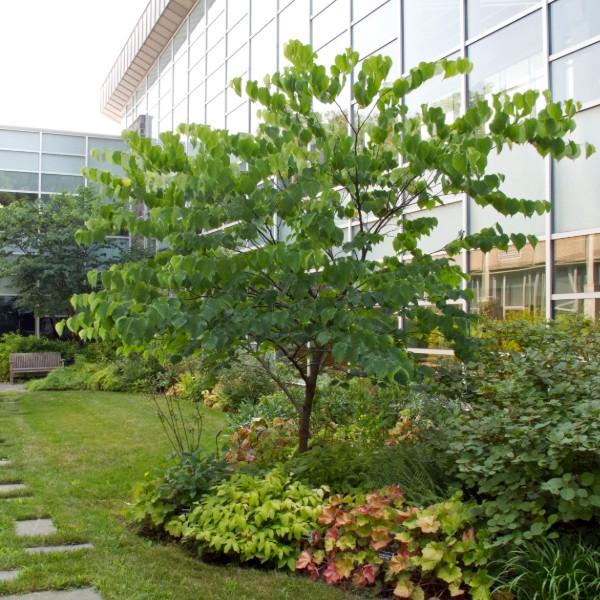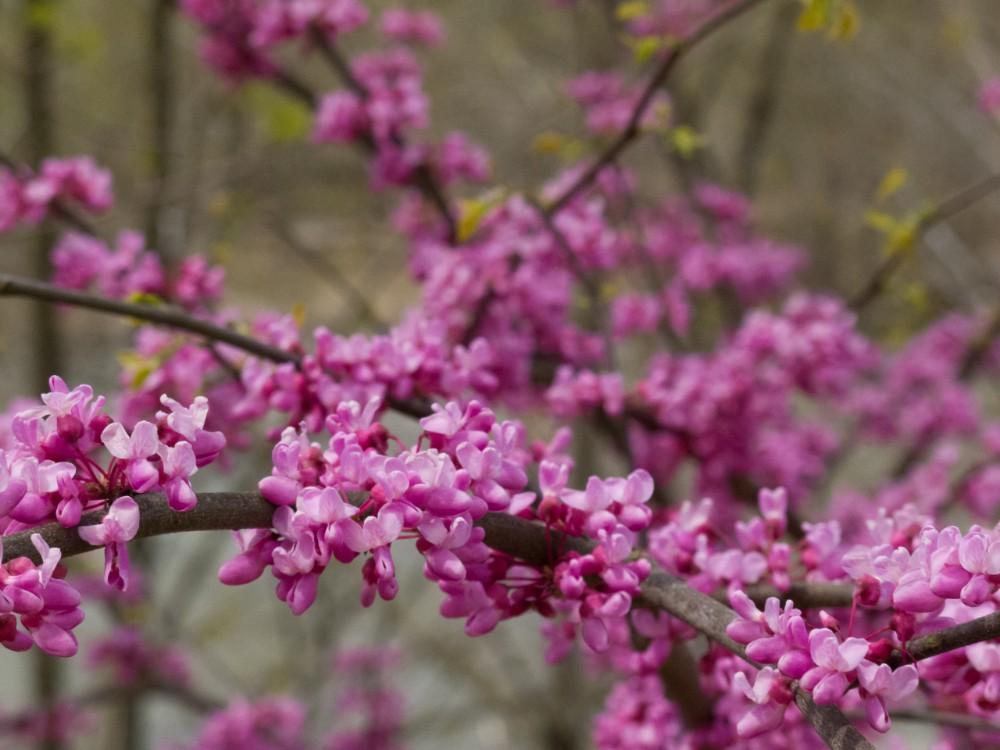About Eastern redbud
Cercis canadensis
Deciduous tree
Maryland Distribution: Maryland Piedmont, Mountain, and Coastal Plain
Height: 20’ to 35’
Flowers: Light pink to lavender, rarely white; showy, blooms April-May, self-pollinating and insect-pollinated
Fall color: Yellow
Sun: Full sun to partial shade; forest edge and understory tree
Soil: Loam-sand-clay, high organic matter; pH 4.5-7.5+
Garden Uses: Eastern redbud is native to the eastern and south-central United States and all regions of Maryland, except for a few counties nearest our Atlantic coastline. Its natural habitat includes forest edges, woodlands, and stream banks. It prefers well-drained, moist-to-occasionally dry soil. It does not tolerate wet, poorly aerated, or coarsely sandy soil conditions.
Showy pink flowers open in late spring before the leaves emerge. The heart-shaped leaves turn yellow in the fall. Pea-like seed pods are brown-black and may remain on the tree during the winter. Self-sows. Susceptible to Verticillium wilt, Botryosphaeria canker, and leaf anthracnose.
Use as a small specimen tree in a yard, woodland, or pollinator garden. This tends to be a short-lived tree (20-30 years). Plant trees in succession for replacement.
Wildlife: Many bees are supported by the nectar and pollen provided by the flowers of Eastern redbud. Some butterflies will feed on the nectar as well. This is a host plant for several species of moths, including the Io Moth and the White-Marked Tussock Moth. Some songbirds, such as Northern Cardinals, eat the seeds.


References
Eastern Redbud. Southern Research Station, Forest Service, USDA.
Slattery, Britt E., et. al. 2005. Native Plants for Wildlife Habitat and Conservation Landscaping, U.S. Fish & Wildlife, Chesapeake Bay Field Office, Annapolis, MD. 82 pp.
